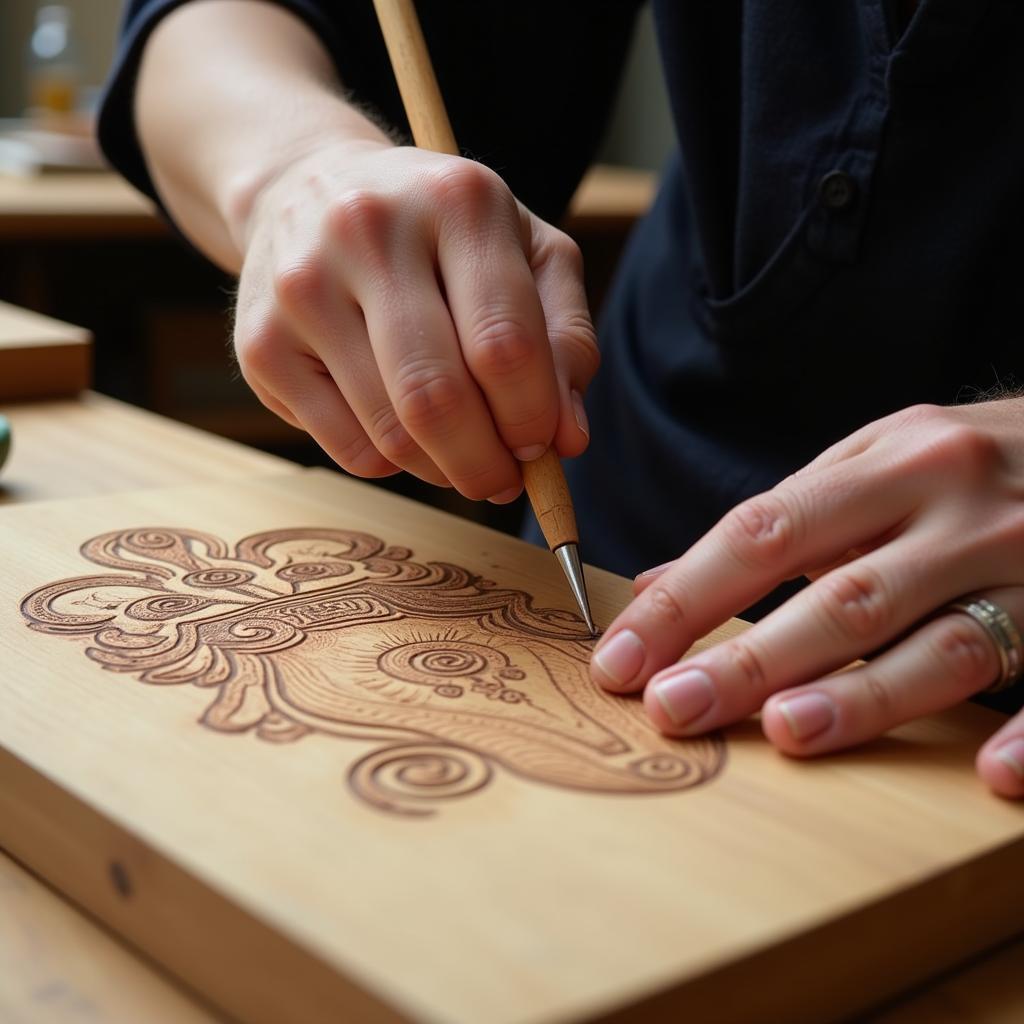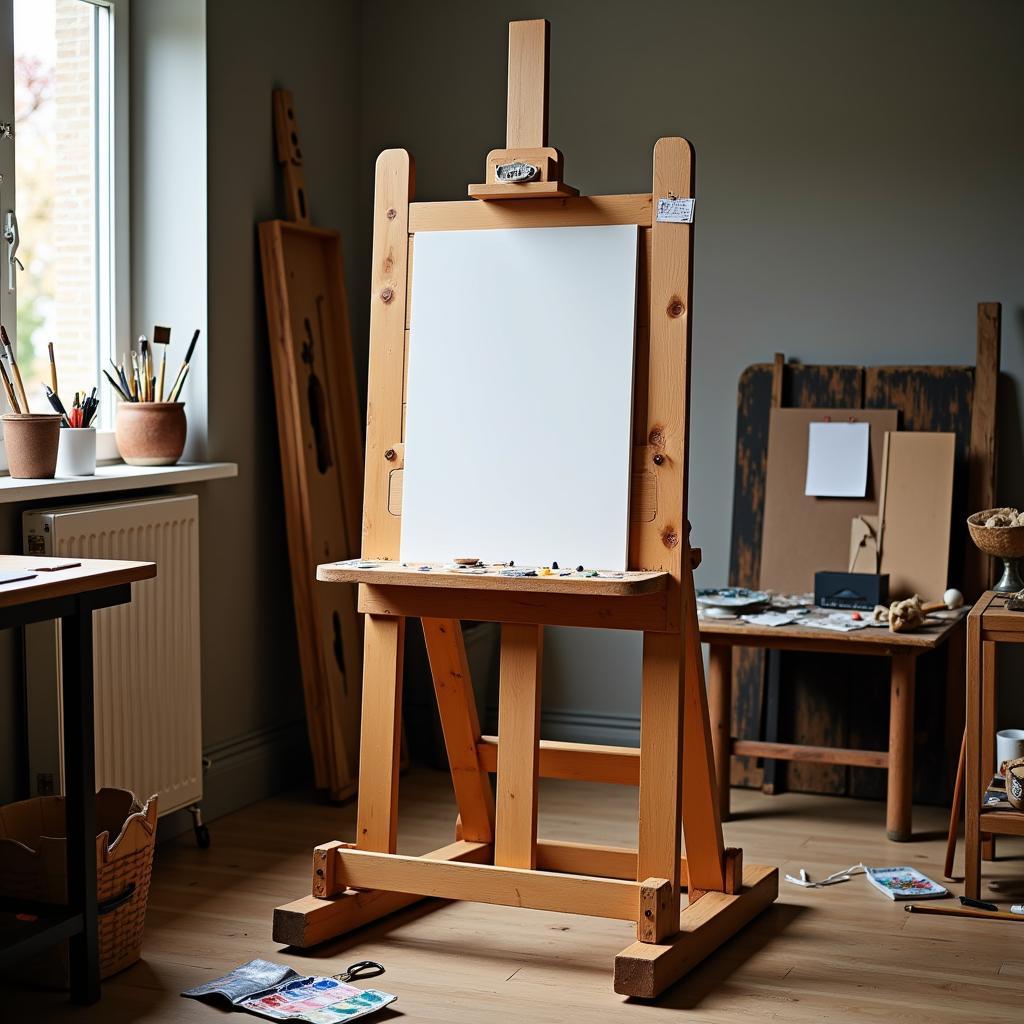Remixing Art: Unleashing Creativity in the Digital Age
Remixing Art is transforming the creative landscape. It’s about taking existing pieces, deconstructing them, and weaving them into something fresh and exciting. It’s a powerful way to explore new artistic avenues, challenge traditional notions of ownership, and foster a vibrant community of collaboration. Whether you’re a seasoned artist or just starting your creative journey, remixing offers a unique opportunity to experiment and push the boundaries of your imagination.
What is Remixing Art?
Remixing art involves taking existing artwork – be it music, visual art, literature, or any other form – and reworking it to create a new piece. This can involve anything from subtle alterations to complete transformations, depending on the artist’s vision. Think of it like a musical remix: a DJ takes a popular song, isolates different tracks, adds new beats and melodies, and ultimately produces a fresh interpretation of the original. Remixing in visual art might involve collaging, photo manipulation, or incorporating elements from different paintings into a single composition. It’s about building upon the foundations of existing art to create something novel.
What’s key to understanding remixing is that it’s not simply copying or plagiarizing. Instead, it’s about engaging in a dialogue with the original work, adding your own unique perspective and transforming it into something new. It’s a process of creative reinterpretation and reinvention.
The Power of Remixing in Digital Art
The digital age has supercharged the potential of remixing art. With readily available software and online platforms, artists have access to a vast library of resources and tools. This allows for seamless integration of different media, creating multimedia experiences that blur the lines between traditional art forms.
Digital tools also empower artists to experiment with different techniques and styles more easily. They can manipulate images, sounds, and text with precision, pushing the boundaries of their creativity and exploring new avenues of expression. The ease with which digital art can be shared online also fosters a sense of community and collaboration, encouraging remixing and the exchange of creative ideas.
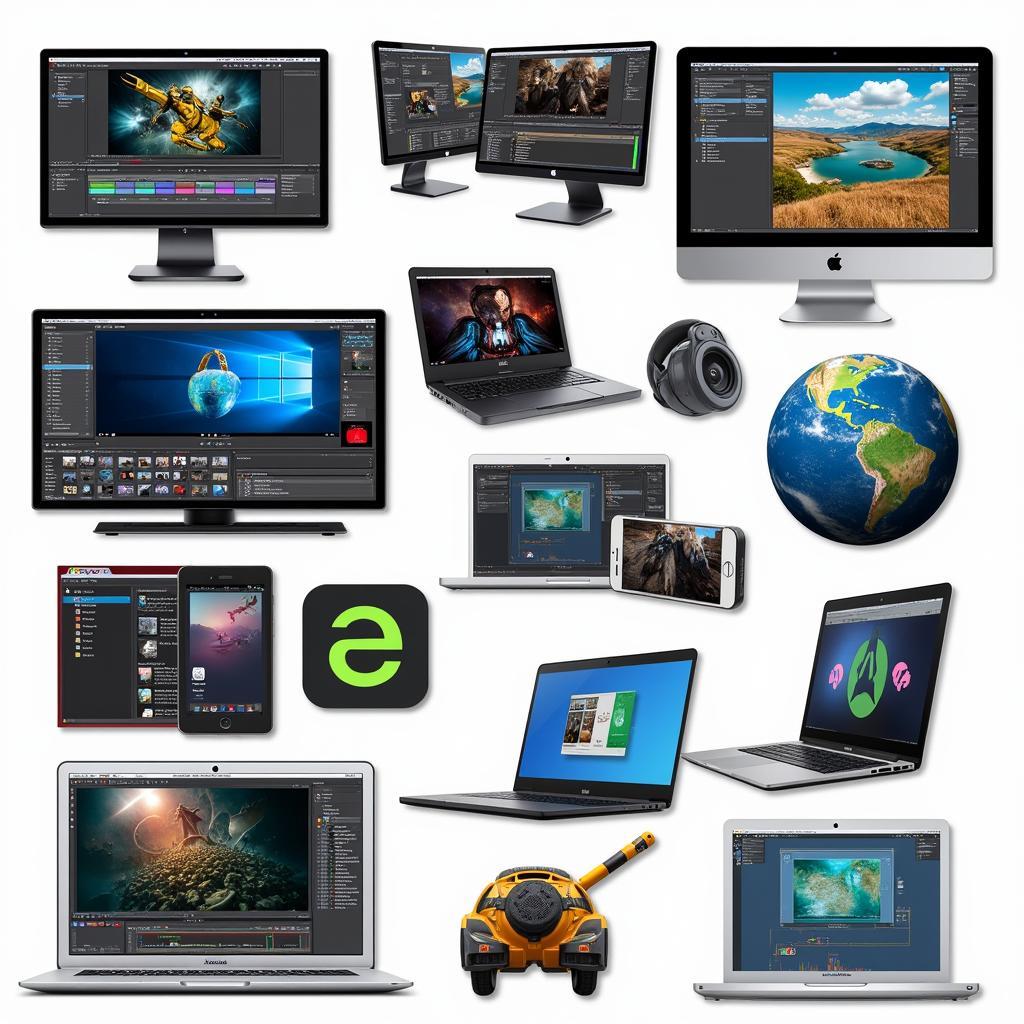 Digital Art Remixing Tools
Digital Art Remixing Tools
Exploring Different Remixing Techniques
There’s a vast array of remixing techniques to explore. Collage, for example, involves combining different images or fragments of images to create a new composition. This can be done physically or digitally, and the results can range from abstract to representational. Photo manipulation allows artists to alter photographs in countless ways, changing colors, textures, and even adding or removing elements.
Sampling is another common remixing technique, particularly in music and video. It involves taking a portion of an existing work and incorporating it into a new piece. This can be done to pay homage to the original artist, to create a specific mood or atmosphere, or simply to add an interesting element to the new work.
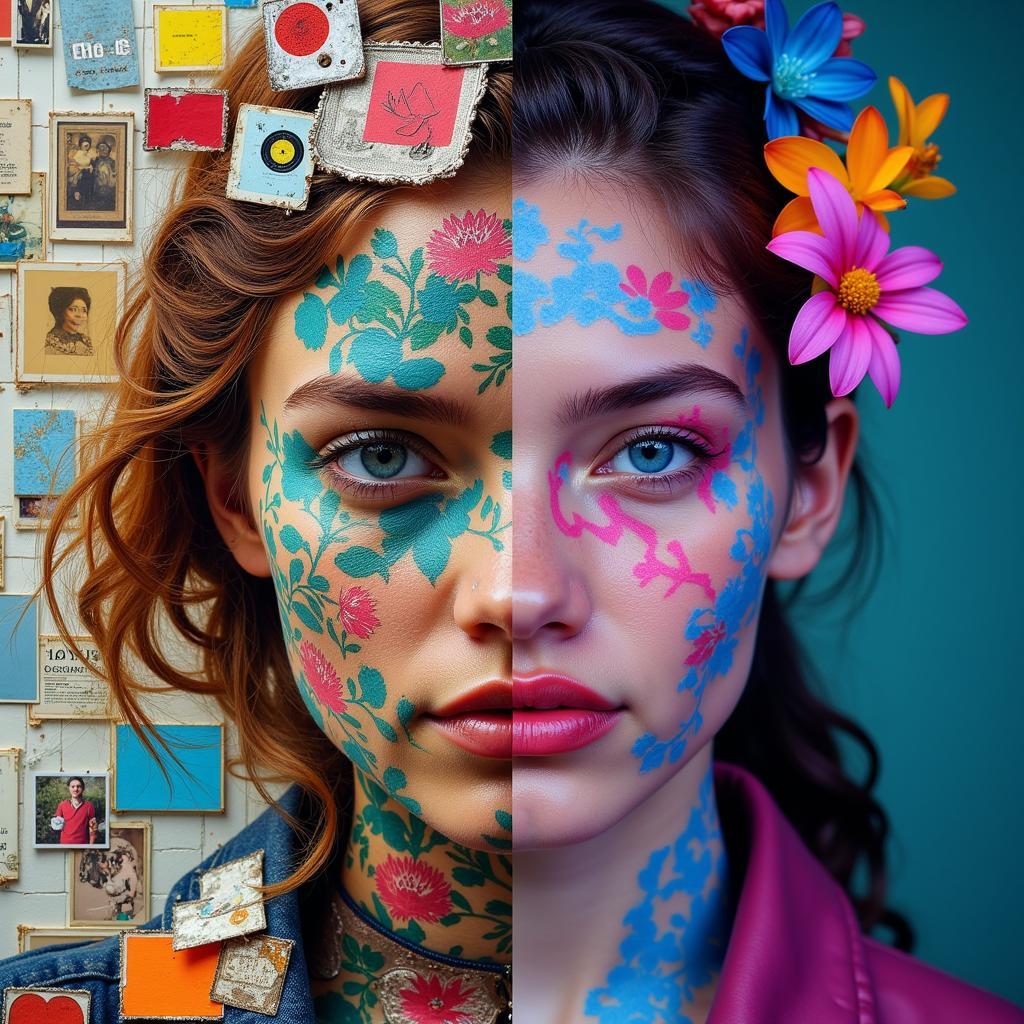 Art Remixing Techniques: Collage and Photo Manipulation
Art Remixing Techniques: Collage and Photo Manipulation
Is Remixing Art Legal?
The legality of remixing art can be a complex issue, often revolving around copyright law. Generally, using copyrighted material without permission is illegal. However, the concept of “fair use” allows for limited use of copyrighted material for purposes such as commentary, criticism, parody, and education. The specific parameters of fair use can be tricky to navigate, and it’s always best to err on the side of caution. Seeking permission from the original artist is always a good practice, and acknowledging the source of the original work is essential.
Many artists embrace remixing and actively encourage it. Some even release their work under Creative Commons licenses, which grant specific permissions for reuse and remixing. This fosters a culture of shared creativity and collaboration, allowing artists to build upon each other’s work and explore new artistic possibilities together.
Remixing: A Catalyst for Creative Growth
Ultimately, remixing art is about more than just creating new works. It’s about fostering a vibrant and dynamic creative ecosystem. By engaging with existing art, artists develop their skills, explore new ideas, and challenge traditional notions of authorship and ownership. Remixing encourages dialogue, collaboration, and the continuous evolution of artistic expression.
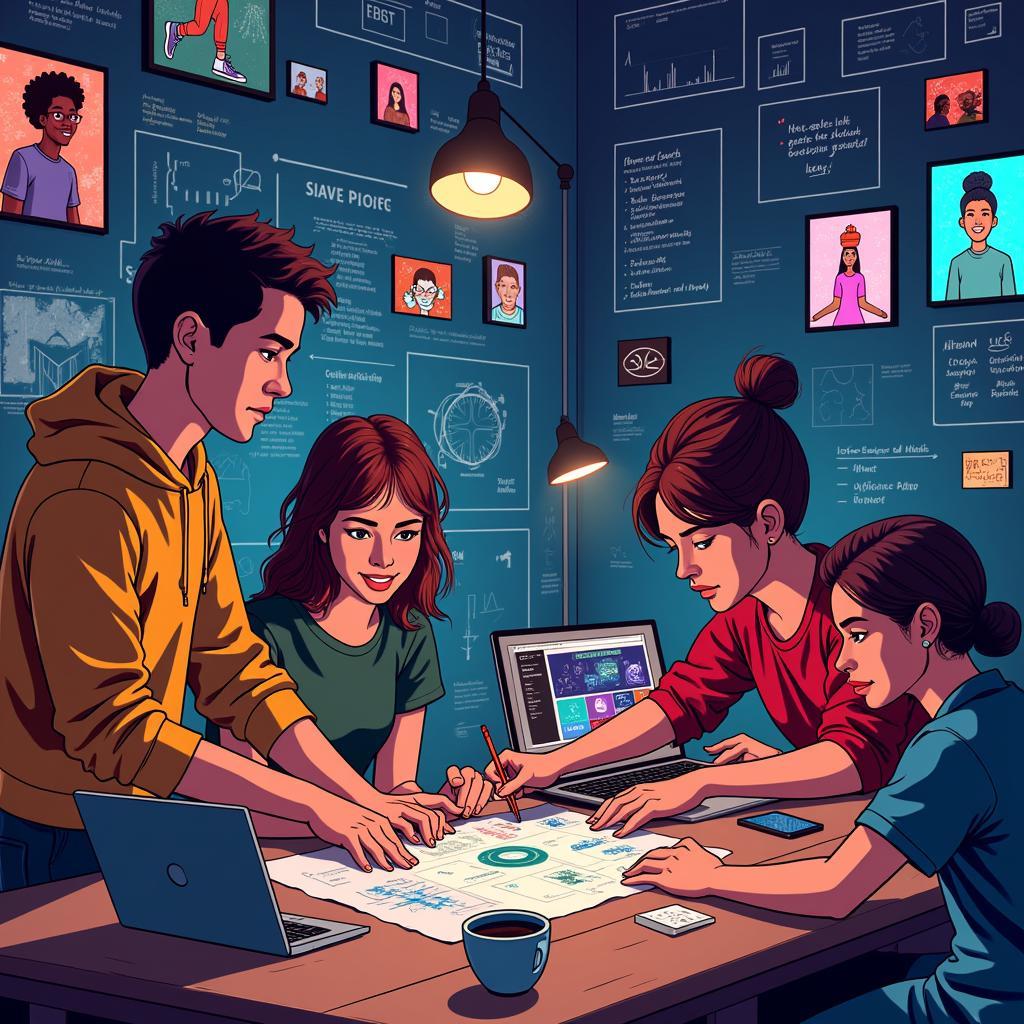 Remix Culture & Creative Collaboration
Remix Culture & Creative Collaboration
In conclusion, remixing art in the digital age offers an exciting pathway for creative exploration. By embracing this approach, artists can unlock new levels of innovation and contribute to a dynamic and ever-evolving artistic landscape. So, dive in, experiment, and remix your way to artistic discovery.
FAQ
-
What software can I use for remixing art? There are many options, including Photoshop, GIMP, Audacity, and Blender.
-
Where can I find resources for remixing? Online platforms like DeviantArt, Behance, and SoundCloud offer vast libraries of creative content.
-
How can I ensure my remixes are legal? Research copyright law and consider using Creative Commons licensed material. Always attribute the original artist.
-
What are some examples of famous remixed art? Think about Andy Warhol’s Campbell’s Soup Cans or the music of DJ Shadow.
-
How can I get started with remixing? Start small, experiment with different techniques, and don’t be afraid to explore!
-
What is the difference between remixing and plagiarism? Remixing involves transforming existing work into something new, while plagiarism is presenting someone else’s work as your own.
-
Can I sell remixed art? It depends on the copyright status of the original work and the extent of your transformation. Consult with a legal professional if you have questions.
Need support? Contact us 24/7: Phone: 02462573573, Email: [email protected] or visit us at Savico Megamall, 7-9 Đ. Nguyễn Văn Linh, Gia Thụy, Long Biên, Hà Nội 10000, Việt Nam.



